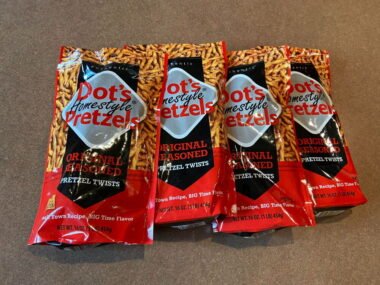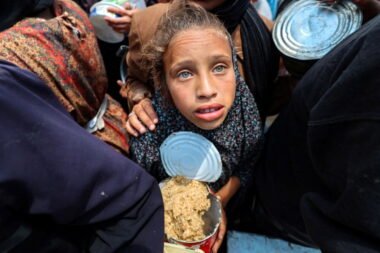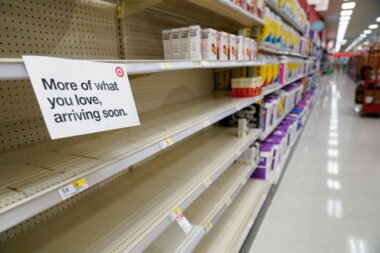- Grocery shortages can result from natural catastrophes, disease outbreaks, labor issues, supply chain interruptions, and trade restrictions.
- Recent Trends:** The 2023-2024 rice crisis and 2024-2025 meat scarcity demonstrate the dynamic nature of food supply issues.
- Economic and Social Impact: Shortages increase costs, decrease availability, and stress consumers and producers.
- Regional Variations: Weather extremes and regional policy can affect shortage severity and length.
- Addressing shortages requires diversifying supply sources, enhancing supply chain resilience, and adopting sustainable practices.
Many communities and food sector stakeholders worry about grocery shortages. Empty shelves, rising prices, and broad economic damage happen when retail food supply falls short of customer demand. Our planet confronts environmental, economic, and political difficulties, so understanding the reasons and solutions to these shortages is vital. This article analyzes grocery shortage trends, causes, geographical differences, and mitigating options.
Introduction
Food shortages are nothing new, but global events have increased their regularity and severity. Whether it’s the 2023-2024 rice shortfall or 2024-2025 beef supply issues, these events show our food systems’ susceptibility. Grocery shortages affect farmers, producers, merchants, and consumers. This complex issue requires a deep understanding and strong policies to maintain food security.
Causes and Recent Examples
A complicated interaction of events causes grocery shortages. Some main causes:
Natural disasters
Natural calamities like floods, droughts, and storms affect agriculture. Extreme weather can destroy crops and hamper transportation, causing immediate and long-term shortages.
- Rice Shortage Example: In 2023, floods in Pakistan and drought in China reduced rice output drastically. Weather-related issues reduced food production and distribution, causing a global scarcity.
- Drought and other climatic challenges have reduced cow populations, tightening supply and raising meat prices.
Pest and Disease Outbreaks
Plant and animal health emergencies can potentially deplete food supplies. Egg and poultry shortages have occurred due to avian flu outbreaks.
- Egg Supply Disruptions: In 2024, poultry epidemics disrupted egg supplies, compounding supply chain concerns.
- Diseases that harm rice and other crops can cause large losses, which can lead to shortages when paired with bad weather.
Labor Shortages
Labor is essential to food production and supply. Pandemics, immigration regulations, and local economic situations can cause manpower shortages, hindering manufacturing, processing, and distribution.
- The COVID-19 pandemic exposed labor supply vulnerabilities, causing food store shortages owing to reduced employment in agricultural, processing factories, and retail.
- Seasonal Variations: Extreme weather or seasonal demand peaks might worsen labor shortages, increasing supply disruption.
Disrupted supply chains
Modern food supply chains are complex. Any disruption—from manufacturing to transportation—can cause shortages.
- Port Strikes and Logistics: Dockworker strikes and logistics network disruptions have disrupted the delivery of perishable items like bananas and fresh food.
- The system’s just-in-time supply chain concepts render it vulnerable to disruptions since there is insufficient buffer stock to cover abrupt shortages.
Increased Demand
Supply networks can be overwhelmed by panic purchasing or seasonal demand increases. This is especially true during crises when customers hoard essentials.
- Panic buying during the early stages of the COVID-19 pandemic caused temporary but substantial shortages in numerous key food products, illustrating the fragile balance between supply and demand.
- Seasonal Demand: Holidays and other seasonal events can cause short-term demand increases that exceed supplies, causing local shortages.
Economic factors and trade restrictions
Government policy and economic variations affect food availability. Trade restrictions, export prohibitions, and tariffs can limit imports, while higher manufacturing costs can reduce output.
- Export prohibitions: Trade restrictions like food export prohibitions can substantially limit supply in importing nations, pushing consumers and businesses to find alternatives.
- Rising costs, such as cattle feed and fertilizer, raise prices and restrict productivity, worsening shortages.
Table: Major Grocery Shortages Causes
| Cause | Impact on Supply | Recent Example |
|---|---|---|
| Natural Disasters | Crop devastation, transport delays | 2023 rice shortage due to floods/drought |
| Disease and Pest Outbreaks | Reduced crop yield, animal loss | Bird flu affecting egg supplies |
| Labor Shortages | Slowed production and logistics | COVID-19 impact on workforce |
| Supply Chain Disruptions | Interruptions in delivery systems | Port strikes affecting perishable goods |
| Increased Demand | Rapid depletion of stocks | Panic buying during crises |
| Trade Restrictions | Reduced imports, higher prices | Export bans on non-basmati rice |
| Economic Factors | Elevated production costs | High cattle feed costs affecting beef |
Impacts on Consumers and Economy
The effects of grocery shortages go beyond empty shop shelves. Both consumers and producers confront major issues:

Economic Impact
- Lower supply leads to higher pricing. Rice prices skyrocketed during the 2023 scarcity, straining household budgets.
- Rising prices and disturbed supply networks force producers, especially farmers, into lower profit margins.
- Shortages cause uncertainty, which increases market volatility. Price fluctuations can cause long-term food market instability in both domestic and foreign markets.
Consumer Impact
- Consumers, especially low-income families, are affected by rising food prices. Food insecurity increases when essential foods become too pricey.
- Empty supermarket shelves can cause customer discontent and a lack of faith in the food supply chain.
- Nutritional Impacts:** When shortages compel consumers to buy less nutritious basics, public health may suffer, increasing malnutrition in vulnerable communities.
Social Impact
- Inequality: Shortages disproportionately affect disadvantaged groups. In places where rice is a major staple, shortages can worsen social and economic inequalities.
- Community Strain:** Food shortages may create social stress and unrest when communities lose access to fundamental essentials.
Prevention Methods
Grocery shortages necessitate comprehensive solutions. Policymakers, producers, and merchants must work together to improve supply resilience and stability.
Increasing Supply Diversity
Reducing food dependence on one location or source is effective. Expanding supply geography reduces local interruption risk.
- Global Sourcing: Importing food from varied places helps protect against local calamities and legislative changes.
- Investing in home manufacturing stabilizes supply and reduces dependence on international markets.
Enhancing Supply Chain Resilience
Building a stronger, more flexible supply chain is crucial. This requires expanding disruption capability and investing in predictive and mitigation solutions.
- Advanced Forecasting Tools: Data analytics and forecasting systems can predict shortages and allow for preventive interventions.
- Infrastructure investments can reduce supply chain interruptions by strengthening logistical networks including storage and transportation.
- Contingency Planning:** Strong contingency planning for unforeseen occurrences help the supply chain respond rapidly and sustain key services.
Enhancing Production Sustainability
Sustainability is crucial to solving food supply issues. Sustainable techniques reduce climate change and stabilize output.
- Climate-Resilient Crops:** Crop types that can resist harsh weather must be researched.
- Resource Efficiency: Improving water and nutrient usage efficiency helps mitigate environmental issues.
- Financial and technical support for farmers promotes sustainable practices and strengthens the agricultural industry.
Changes in policy and trade
Government policies are crucial to food stability. Domestic and foreign issues can be mitigated by good policies.
- Subsidies and Incentives: Sustainable practices and higher output can raise supply.
- Regulatory Reforms: Reducing trade obstacles and food import hurdles helps stabilize supplies amid domestic shortages.
- Crisis Management Protocols: Coordinated stakeholder response strategies help keep food supply steady during emergencies.
Unexpected Insights and Regional Variations
Regional variation in food shortages is crucial. Local circumstances can greatly impact shortage intensity and duration:
Regional Differences
- Northern vs. Southern Regions:** Winter storms in the Northeast may cause more severe shortages than in gentler locations like California.
- Due to logistical issues, rural locations may face greater shortages than urban places, which may have superior supply systems.
- Economic and Policy Disparities: Regions with strong agriculture policy and local production frequently do better than import-dependent ones.

Unexpected Wisdom
- Localized Resilience: Some regions have distinct shortage-fighting techniques. Local community cooperatives and regional food banks are vital amid supply outages.
- Adaptive Consumer Behavior: Consumers in shortage-prone areas have adapted by planning purchases and using other food sources to mitigate transitory shortages.
Conclusion
Grocery shortages affect the economy, society, and government. Natural catastrophes, disease outbreaks, labor troubles, supply chain weaknesses, and governmental decisions create complicated problems. These variables can combine to disrupt food supplies, as seen in the 2023-2024 rice scarcity and 2024-2025 meat shortage.
Diversifying supply sources, improving supply chain resilience, encouraging sustainable agriculture, and implementing effective policy interventions are needed to address these shortages. These techniques can help stakeholders plan for disruptions and protect food supplies.
Managing food shortages requires continual monitoring and adaptive actions as the global landscape changes. A resilient food system promotes economic stability and social well-being by providing reliable availability to vital foods.
What causes food shortages?
Natural catastrophes, illness outbreaks, labor shortages, supply chain interruptions, panic purchasing, trade restrictions, and economic issues can cause grocery shortages. These causes can cause food shortages alone or together.
Natural catastrophes affect food supply how?
Floods, droughts, and storms can harm crops and infrastructure, destroying agricultural productivity. The immediate agricultural yields and transportation and distribution networks are affected, causing persistent food shortages.
Labour shortages affect food shortages—why?
From farming and processing to transportation and retail, labor shortages impact the food supply chain. Lack of personnel hinders manufacturing, processing, and delivery, which might cause supermarket shortages.
How might grocery shortages be mitigated?
Several methods can reduce food shortages:
- Diversifying supply sources reduces regional or supplier dependency.
- Investment in enhanced forecasting, infrastructure, and contingency planning boosts supply chain resilience.
- Climate-resilient crops and efficient farming promote sustainable production.
- Policies: Trade assistance, subsidies, and crisis management.
Does every region have food shortages?
Grocery shortages vary by area. Regional disparities can result from weather, infrastructure, economics, and legislation. Areas with severe weather may have longer shortages than those with gentler climates and strong supply networks.
How do food shortages affect customers long-term?
Due to restricted food alternatives, food costs rise, nutritious consumption decreases, and food insecurity rises, especially in vulnerable groups. These effects may worsen economic and social inequality.
How can customers prepare for shortages?
Customers can prepare:
- Pre-planning purchases
- Keeping a few non-perishables,
- Monitoring supply patterns,
- Explore local sources and alternatives when traditional supply are interrupted.
This detailed study of grocery shortages shows how complicated and interconnected the variables are. A coordinated and proactive strategy will be needed to ensure a stable and secure food supply as global issues grow.




